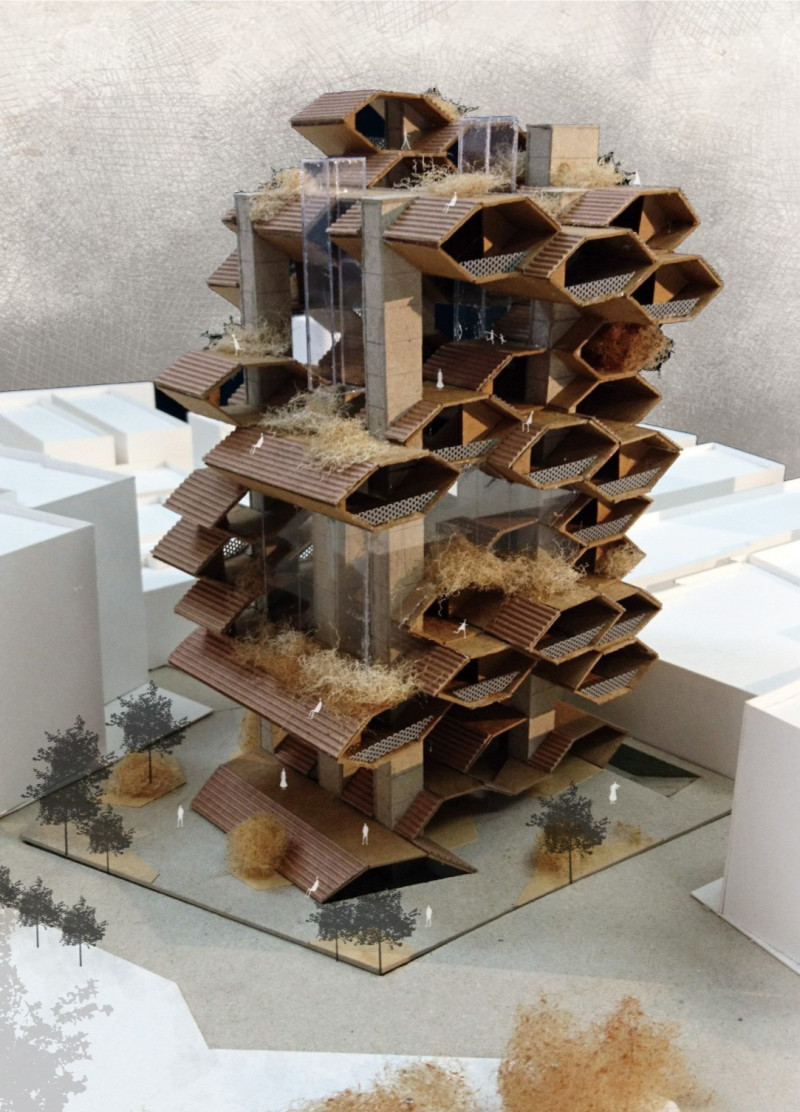5 key facts about this project
The Empty Nest Project presents an exploration of how living environments can connect with nature. It offers a design that is both comforting and secure, drawing upon the imagery of living within a tree. The architecture is constructed in a way that enables residents to feel sheltered and at ease while promoting a sense of community. This layered design concept creates interconnected spaces that support both personal reflection and social gathering.
Design Features
Various room types, including double and quadruple configurations, have been integrated to support different living arrangements. This flexibility caters to the needs of diverse residents, allowing for both privacy and interaction. Public spaces such as cafes and community classrooms are thoughtfully placed within the layout, enhancing opportunities for social engagement and collaboration among occupants.
Spatial Organization
The layout reflects a careful arrangement of spaces, similar to how branches extend from a tree trunk. Each area is designed to serve specific purposes, maintaining a balance between communal and private settings. Functional elements like split-layer chairs and sleeper storage partitions enhance usability, allowing residents to make the most of their living spaces. These features add practicality while promoting comfort.
Community Engagement
Connections between residents are encouraged through well-designed outdoor gathering spaces. A balcony doorway sub-community invites activities like barbecuing or casual meet-ups, reinforcing social ties. Additionally, a mobile art gallery enhances cultural interaction, allowing for creative expression to flourish among residents.
The design pays attention to structural stability as well. The unit floor slabs create a reliable foundation for the layered arrangement. This thoughtful approach not only supports the physical structure but also reflects an understanding of human interaction in living spaces. Subtle design details enhance the project's sensitivity toward the environment, demonstrating a commitment to blending space with nature.



















































